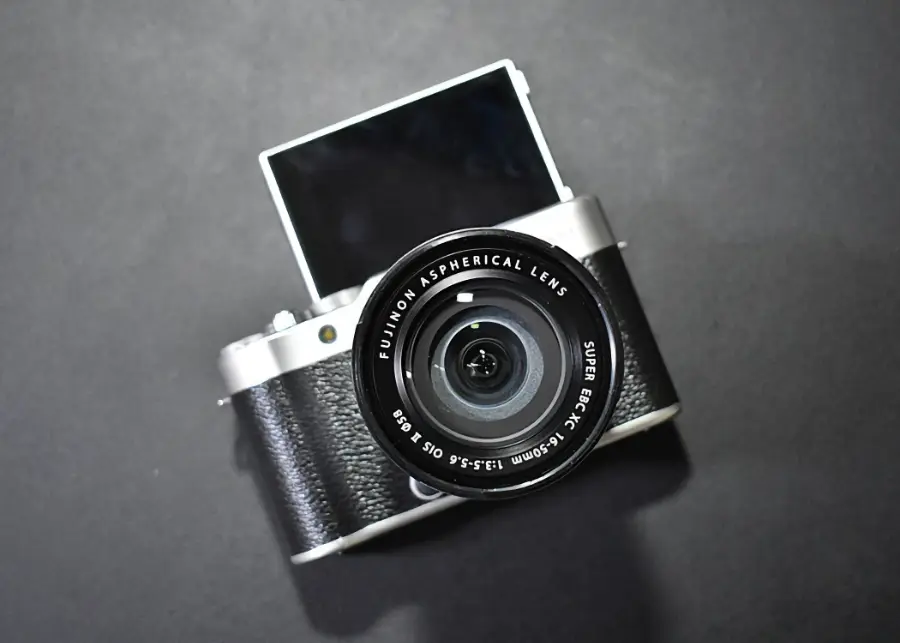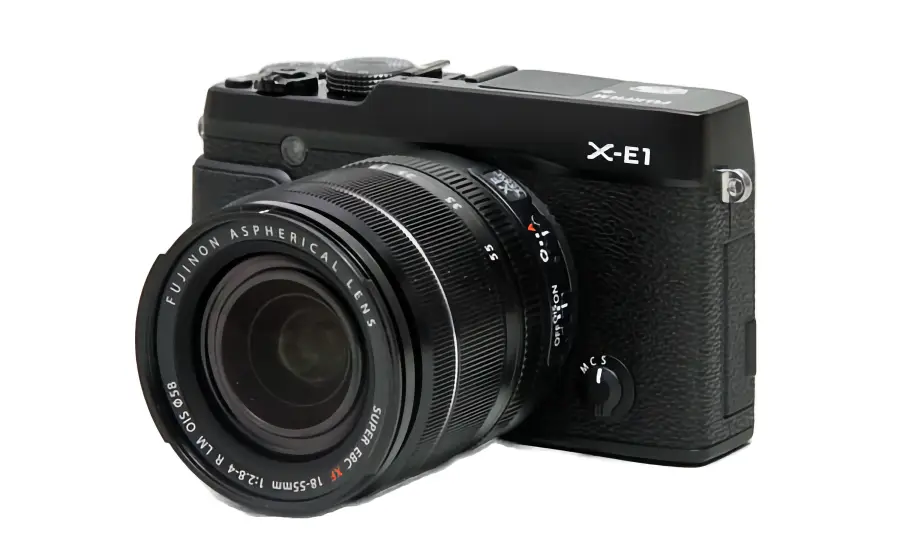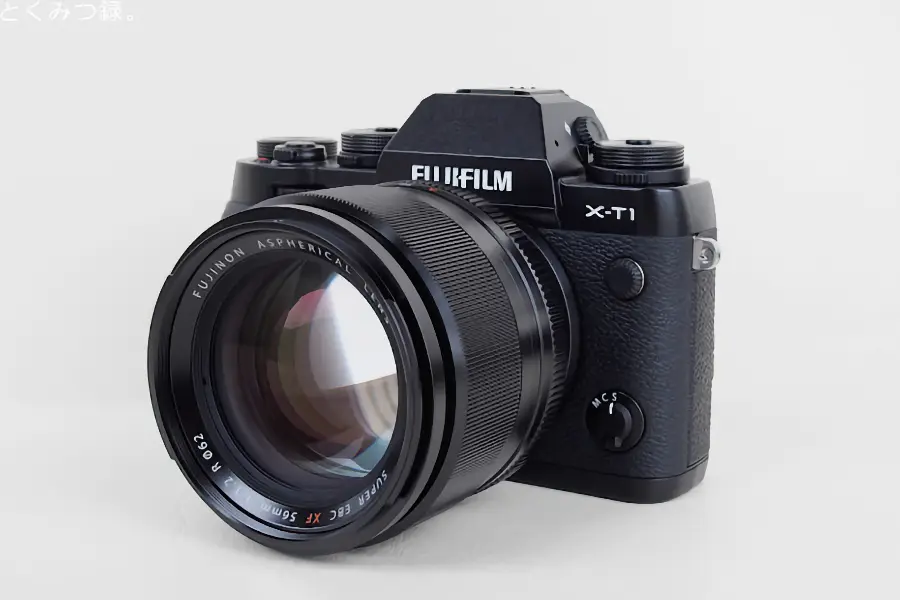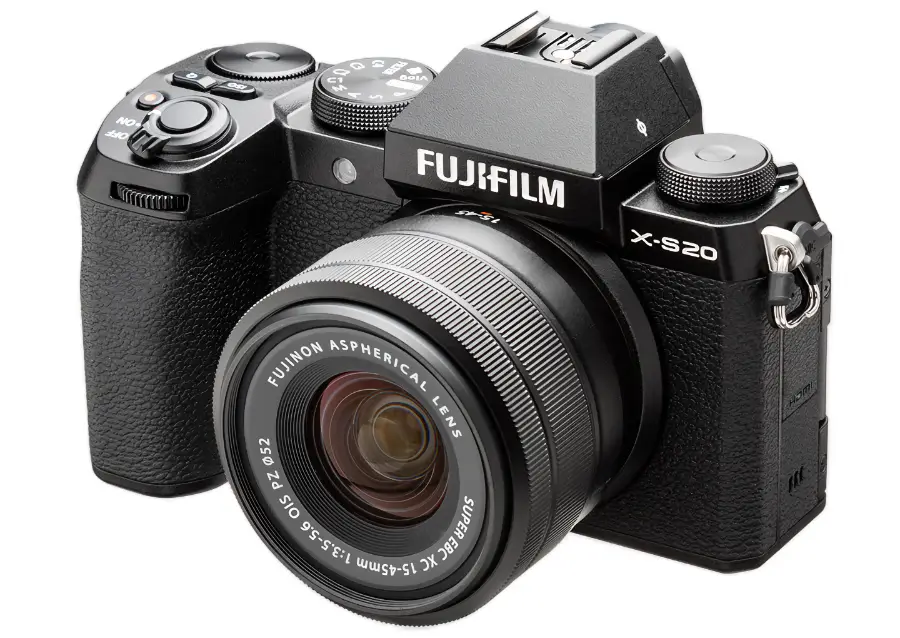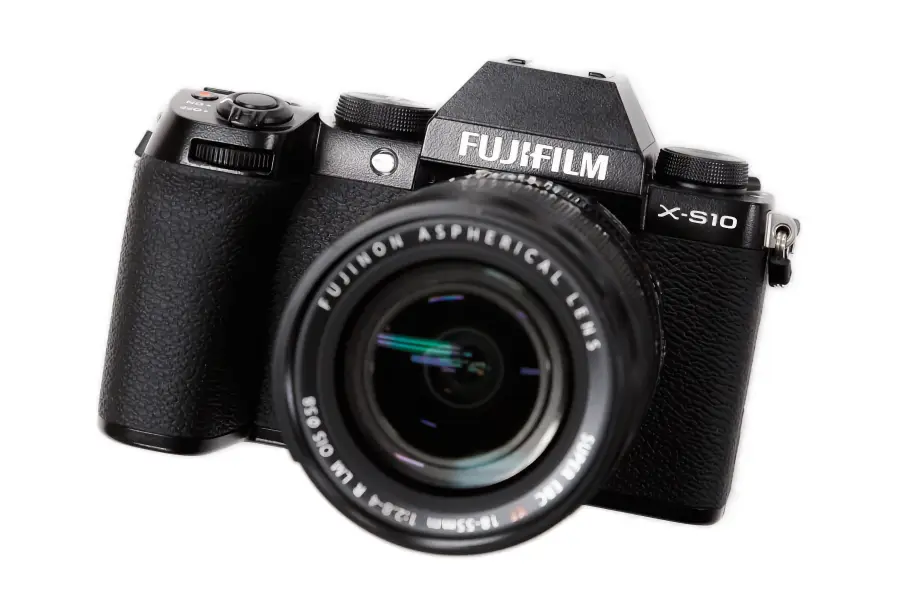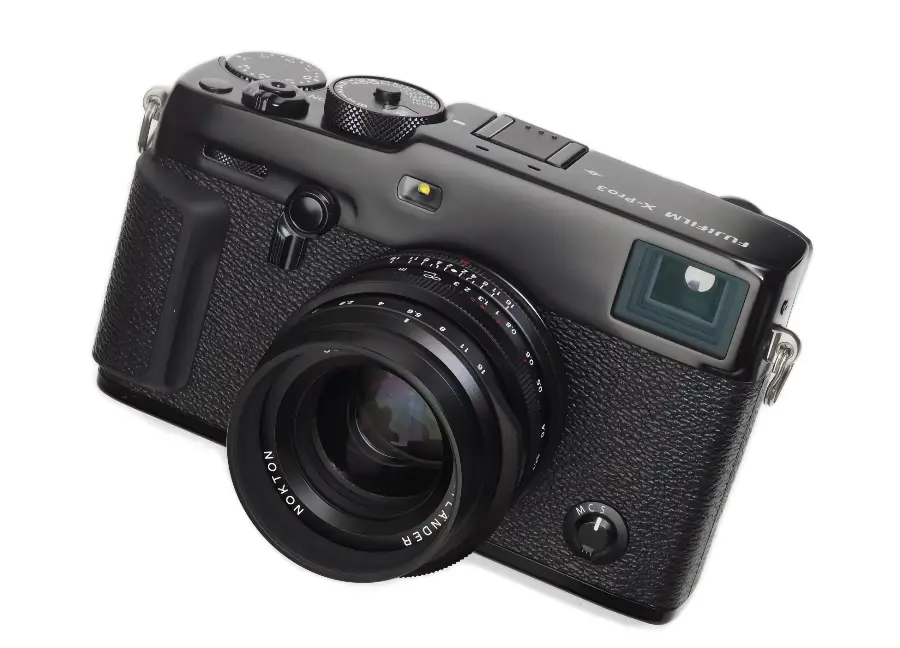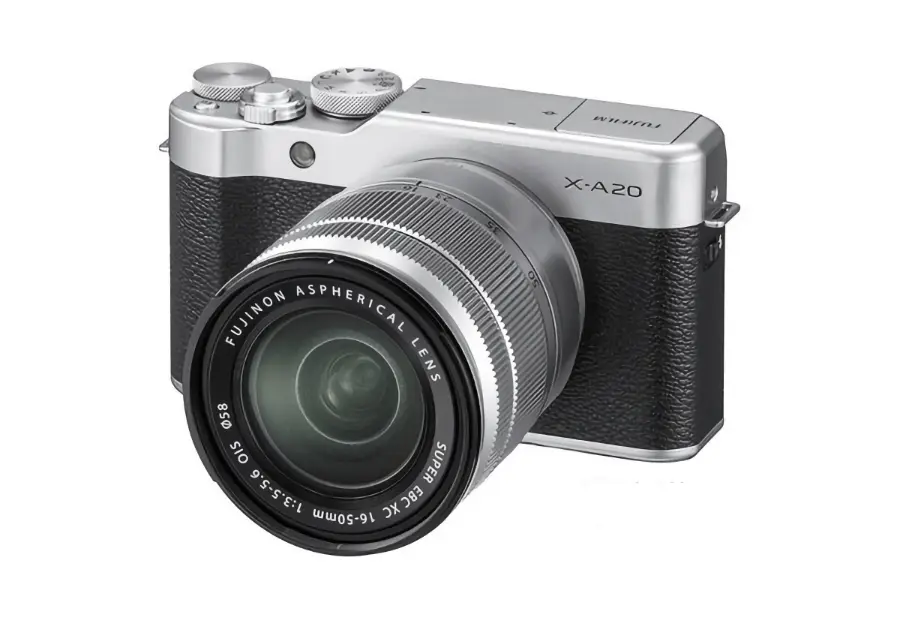
The Fujifilm X-A20 is a budget-friendly mirrorless camera designed for beginners and camera newcomers. Its main advantages include excellent image quality, a user-friendly interface, and a reasonable price point. In this review, we’ll take a detailed look at the X-A20’s key features, pros and cons, and real-world performance.
Key Specifications
| Spec | Details |
|---|---|
| Sensor | 24.2MP APS-C CMOS |
| Processor | Unspecified (Not X-Trans) |
| ISO Range | 200-6400 (exp. 100-25600) |
| Cont. Shooting | Up to 6fps |
| Autofocus | Contrast-detect AF |
| Screen | 3-inch 920K dot tilting LCD (180-degree rotation) |
| Video | 1080/60p |
| Weight | Approx. 319g (with battery and card) |
| Size | 116.9 x 67.4 x 40.4 mm |
| Battery Life | Approx. 410 shots (CIPA) |
| Storage | SD/SDHC/SDXC card (UHS-I support) |
| Wi-Fi | Built-in |
🎨 Design & Build Quality
Compact and Lightweight Body
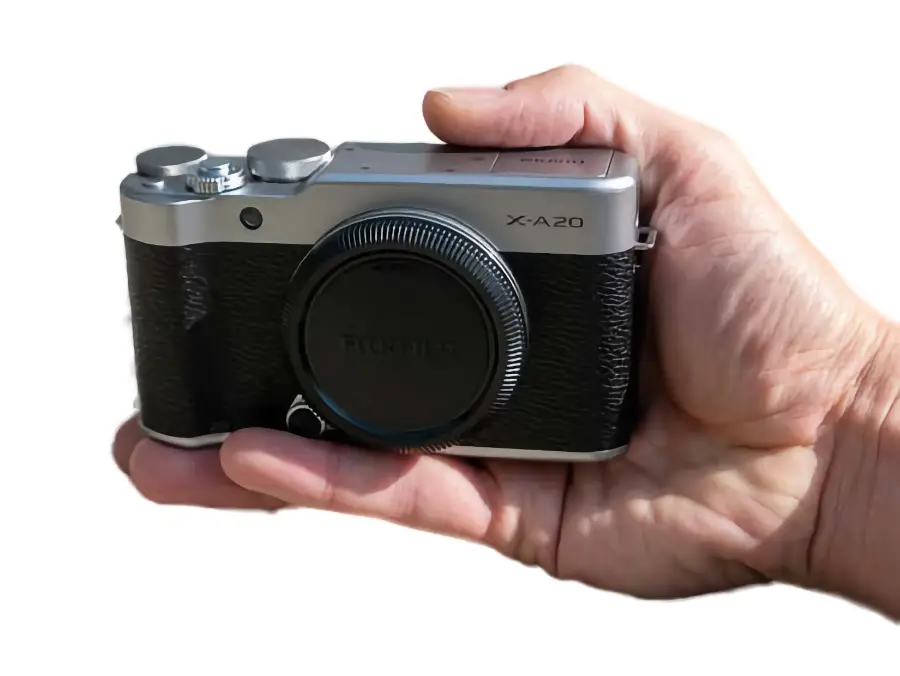
The Fujifilm X-A20 boasts a very compact and lightweight design, measuring 116.9 x 67.4 x 40.4 mm and weighing about 319g. This feature is a significant advantage for users who want to carry their camera everywhere and capture everyday moments.
Ergonomic Grip
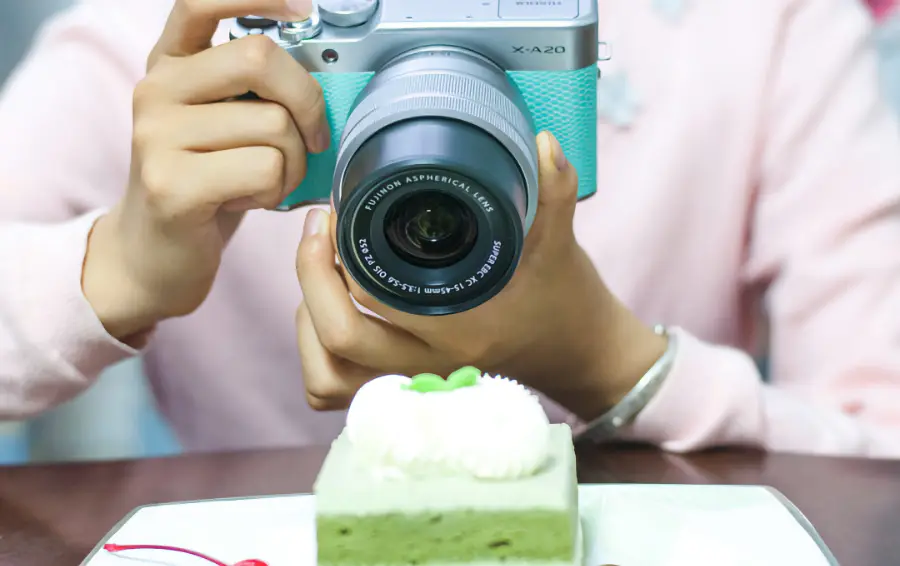
Despite its small size, the X-A20 offers a comfortable grip. The front grip is appropriately protruding, allowing for stable camera handling. This reduces fatigue during extended shooting sessions.
180-degree Tilt LCD Screen
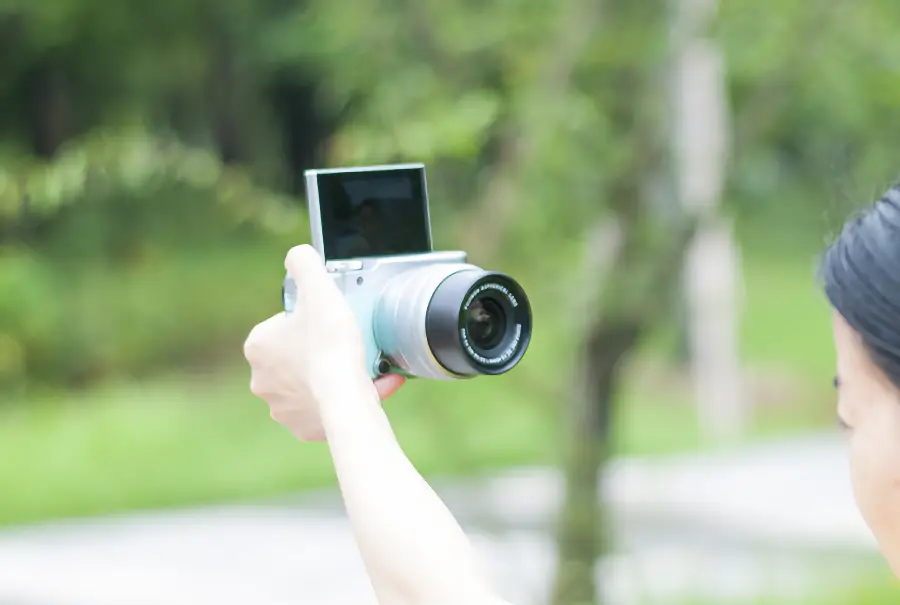
One of the X-A20’s standout features is its 3-inch 920K dot LCD screen that can rotate 180 degrees. This feature is extremely useful for selfies and vlogging. It also allows for easy composition in low-angle or high-angle shots.
📸 Image Quality & Performance
24.2MP APS-C Sensor

The X-A20 is equipped with a 24.2MP APS-C CMOS sensor. This sensor provides rich detail and a wide dynamic range, producing high-quality images. Fujifilm’s renowned color reproduction is particularly noteworthy, allowing you to capture vibrant and natural-looking photos.
ISO Performance

The base ISO range is 200-6400, expandable to 100-25600. It controls noise well in low-light conditions, producing clean images. In general use, you can comfortably use up to ISO 3200 without significant quality loss.
Autofocus System
The Fujifilm X-A20 uses a contrast-detect AF system. While it’s slower compared to the latest phase-detect or hybrid AF systems, it provides sufficient performance for everyday photography. It’s particularly accurate for static subjects and landscape photography.
🎥 Video Recording Features
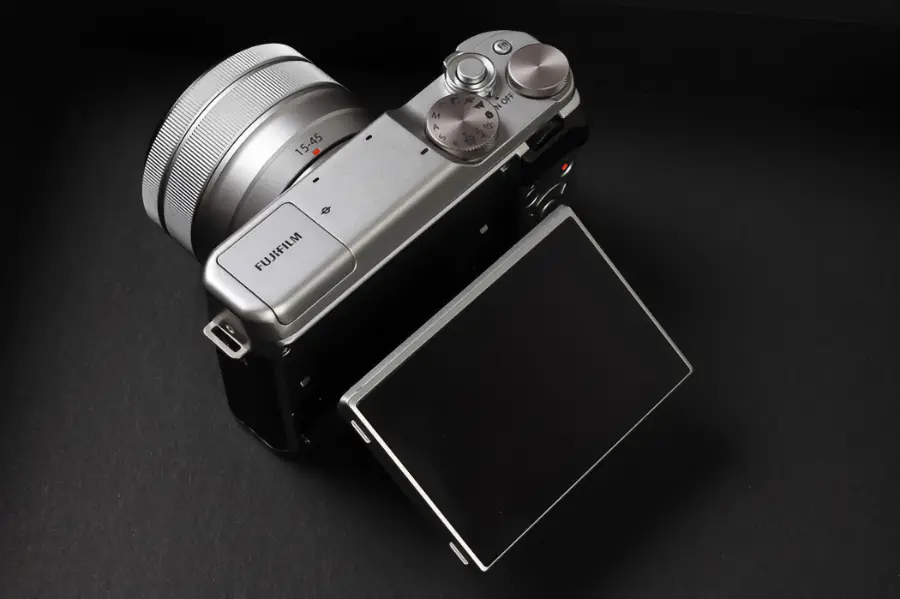
Full HD Video Recording
The X-A20 supports Full HD 1080/60p video recording. The 60fps frame rate allows for smooth footage, especially beneficial for scenes with a lot of movement. While the lack of 4K recording is a drawback, it’s sufficient for general vlogging or YouTube content creation.
Utilizing the Flip Screen
The 180-degree rotating LCD screen is a significant advantage for video recording. It makes self-recording vlog-style videos very convenient and allows for creative shooting from various angles.
Video Recording Precautions
- As the built-in microphone quality is not exceptional, using an external microphone is recommended for high-quality audio recording.
- Since the continuous AF performance isn’t top-tier, manual focus might be preferable when shooting fast-moving subjects.
🔧 Features & Usability
User-Friendly Interface
The X-A20 is designed to be easy to use, even for beginners. The mode dial allows easy switching between automatic and manual modes, and the intuitive button layout provides quick access to key settings.
Wi-Fi Connectivity
Built-in Wi-Fi allows connection to smartphones or tablets. Using the Fujifilm Camera Remote app, you can remotely control the camera or transfer images, making it easy to share photos on social media. This feature aligns well with modern, social media-centric photography culture.
Film Simulation Modes

The X-A20 features Fujifilm’s signature film simulation modes. You can easily apply various film looks such as Provia, Velvia, and Astia to create unique atmospheric photos. This allows you to capture distinctive images without post-processing.
📊 Comparison with Competitors
vs Sony A6000
The Sony A6000 is a popular model in a similar price range to the X-A20. The A6000 offers a faster AF system and an electronic viewfinder, but the X-A20 has a more user-friendly interface and better color reproduction.
vs Canon EOS M100
The Canon EOS M100 is a similar entry-level mirrorless camera. While the M100 supports touch screen, the X-A20 offers a wider range of lens choices and longer battery life.
vs Olympus E-PL9
The Olympus E-PL9 is a Micro Four Thirds system camera, smaller and lighter than the X-A20. While the E-PL9 offers more advanced image stabilization, the X-A20 provides better low-light performance due to its larger sensor size.
🔍 Lens Compatibility & Selection
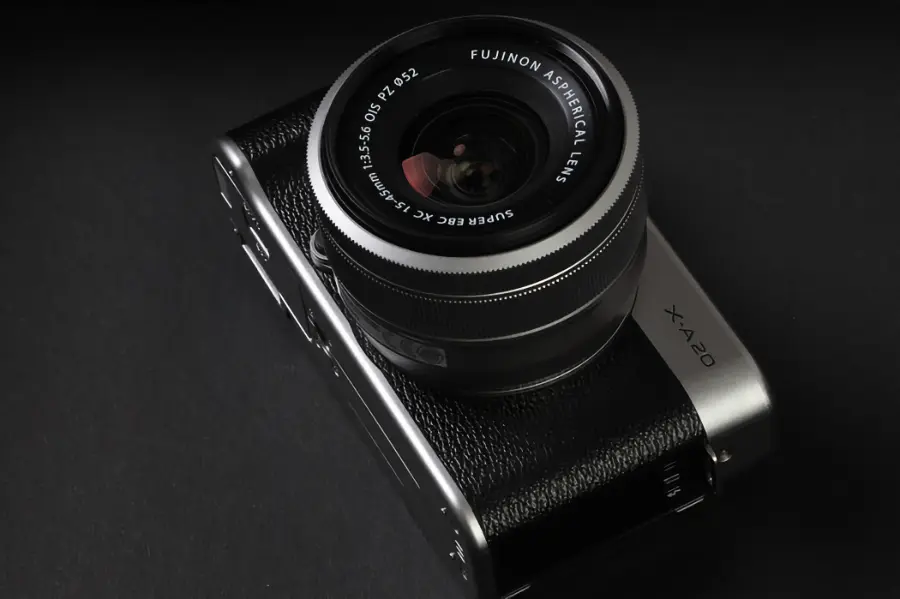
Advantages of Fujifilm X Mount
The X-A20 uses Fujifilm’s X mount, allowing access to a wide range of high-quality lenses. From premium XF series lenses to more economical XC series, there’s a wide selection to choose from.
Recommended Lenses
- XC 15-45mm f/3.5-5.6 OIS PZ: This kit lens is lightweight and versatile, suitable for everyday shooting.
- XF 35mm f/2 R WR: A small, lightweight prime lens ideal for landscapes or portraits.
- XC 50-230mm f/4.5-6.7 OIS II: An economical choice for telephoto shooting.
💡 Usage Tips & Tricks
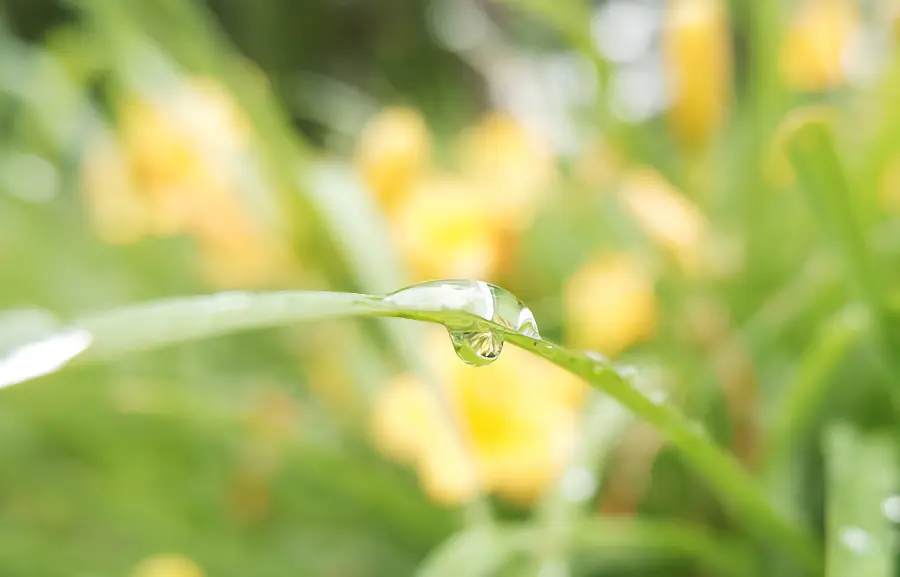
Utilizing Film Simulations
Make the most of Fujifilm’s film simulation modes. Provia offers balanced colors suitable for general situations, Velvia is ideal for vibrant landscapes, and Astia is great for soft portrait photos.
Shooting RAW+JPEG
The X-A20 can shoot RAW and JPEG simultaneously. This allows you to quickly review JPEG images on-site while retaining RAW files for more detailed editing later.
Using Custom Settings
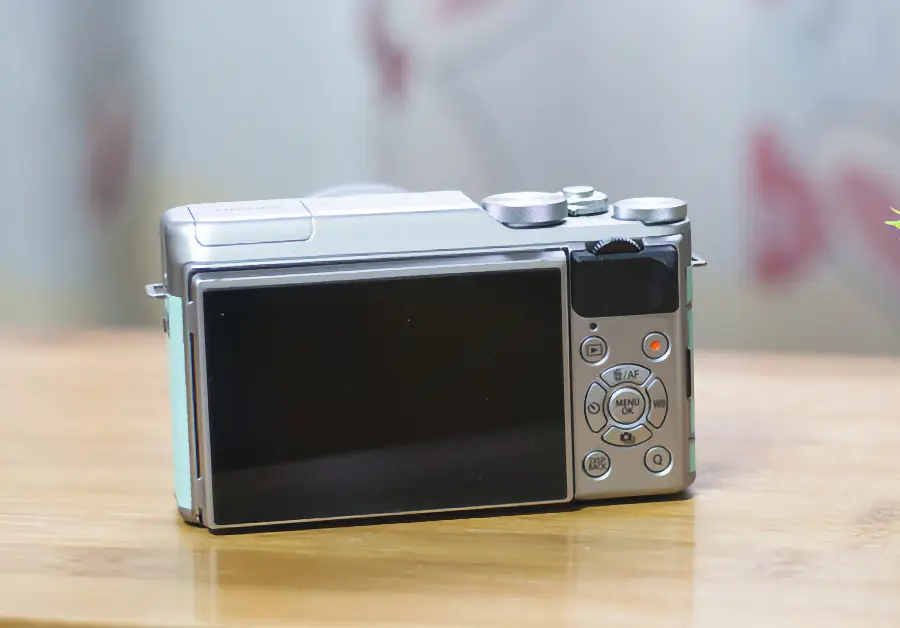
Registering frequently used settings in the custom menu allows for quick setting changes during shooting. For example, you can save indoor/outdoor shooting settings for convenience.
📱 Mobile Integration & Social Media
Fujifilm Camera Remote App
Fujifilm’s official ‘Camera Remote’ app allows you to control the camera remotely and transfer photos using your smartphone. This is particularly useful for selfies or group photos.
Optimized Shooting for Instagram
Using the X-A20’s 1:1 aspect ratio shooting mode, you can easily capture square photos optimized for Instagram. Combining this with film simulation modes can yield impressive results.
🎬 Vlogging Tips
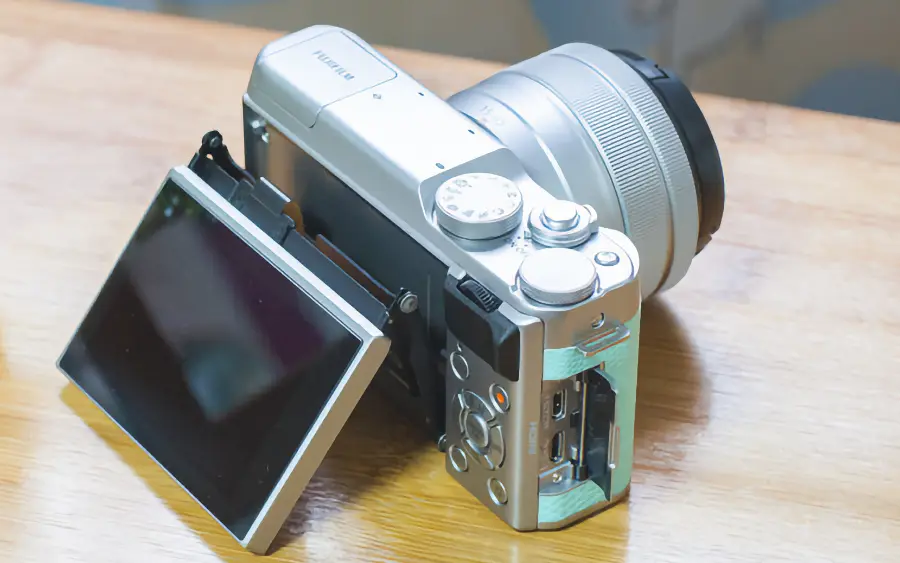
Settings for Stable Shooting
Use these settings for better vlogging results:
- Set the video mode to 1080/60p for smooth footage.
- Use AF-C (Continuous AF) mode to maintain focus on moving subjects.
- Use a lens with OIS (Optical Image Stabilization) to reduce camera shake.
Using an External Microphone
Consider using an external microphone for high-quality audio. The X-A20 supports a 3.5mm microphone jack, allowing connection to various external microphones.
Utilizing Lighting
Make the most of natural light, but consider using a small LED light when needed to enhance video quality.
💰 Price & Value
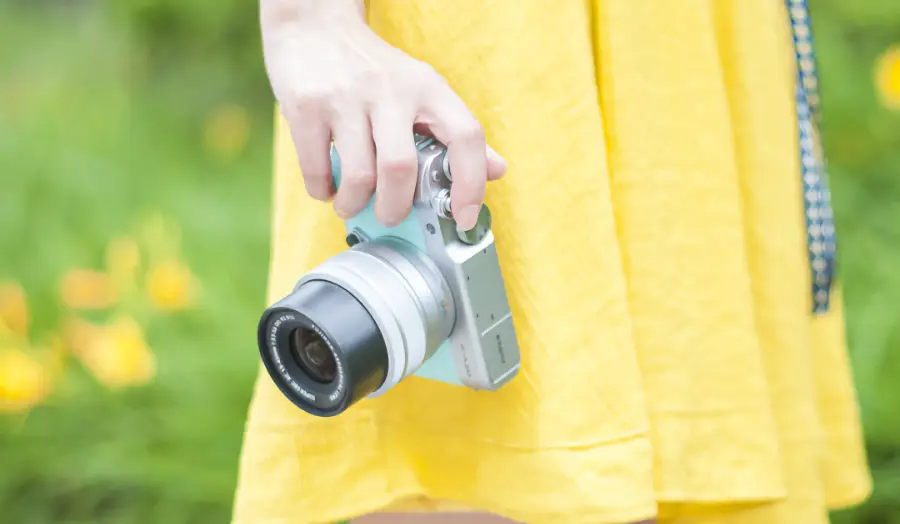
Value Analysis
The X-A20 offered excellent performance for its price at launch, and it’s now available at even more attractive prices in the used market. It can be an especially good choice for beginners or hobby photographers.
Optimal Choice for Beginners
The intuitive interface, excellent image quality, and reasonable price make the X-A20 an ideal choice for camera newcomers. Fujifilm’s color reproduction and film simulation allow even beginners to easily capture attractive photos.
🔧 Maintenance & Durability
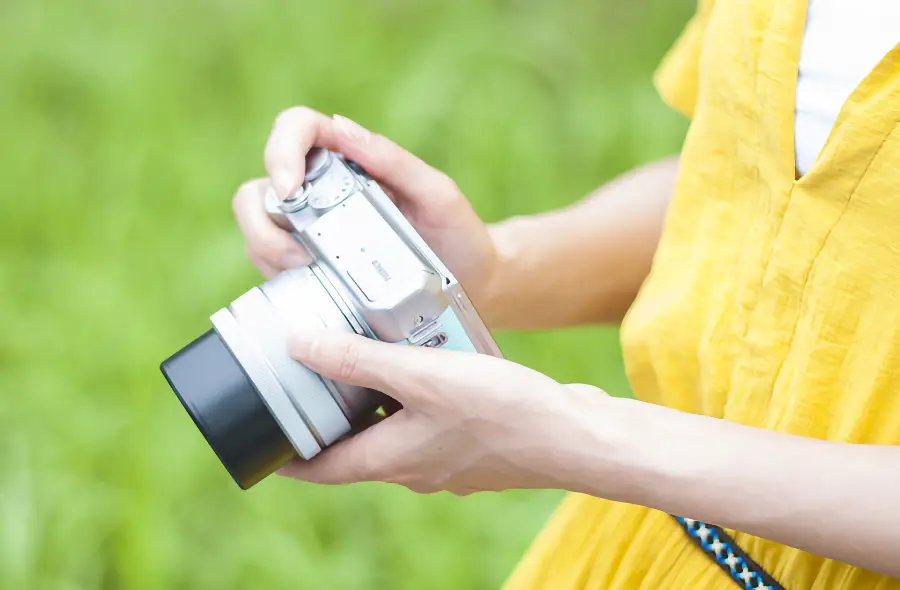
Durability
While its plastic body may be less durable than premium models, it’s sufficiently robust for general use. However, it lacks weather-sealing, so caution is needed in adverse weather conditions.
Firmware Updates
Fujifilm regularly provides firmware updates to improve functionality and fix bugs. Keeping the firmware up-to-date ensures better performance and stability.
📸 Real World Experience & User Reviews
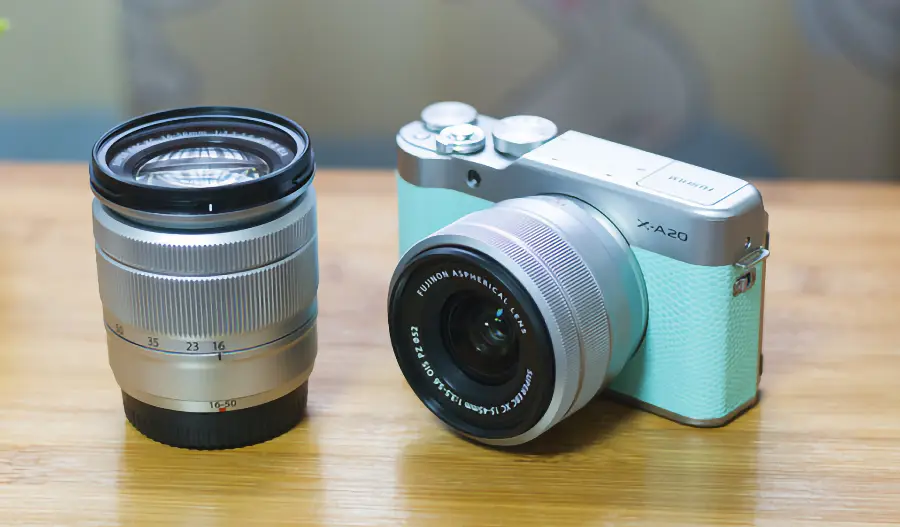
Many users express satisfaction with the X-A20’s excellent image quality and ease of use. Fujifilm’s unique color rendition and compact size are particularly highly rated. However, some users point out the lack of an EVF (Electronic Viewfinder) and slow AF speed as drawbacks.
🏞️ Landscape Photography Tips
When shooting landscapes with the X-A20, try these tips:
- Use a tripod: This allows for sharper images in low-light conditions.
- Utilize filters: ND or polarizing filters can enhance your images.
- Try Velvia film simulation: This can produce vibrant landscape photos.
👤 Portrait Photography Tips
Tips for portrait photography with the X-A20:
- Use a 35mm or 50mm equivalent lens: This provides natural perspective.
- Try Astia film simulation: It renders skin tones beautifully.
- Utilize face detection AF: This ensures sharp focus on your subject’s face.
🌃 Night Photography Tips
Settings for night photography with the X-A20:
- Use a tripod: Essential for preventing camera shake.
- Use low ISO: Minimize noise by using the lowest possible ISO.
- Try long exposures: This can capture light trails or brighten dark scenes.
🔄 Upgrade Path
If you’re considering upgrading from the X-A20 to a higher-spec camera, consider these models:
- Fujifilm X-T20: Offers an EVF and more advanced AF system.
- Fujifilm X-E3: Maintains compact size while improving performance.
- Fujifilm X-T30: Provides higher resolution and 4K video recording.
📊 Summary of Pros and Cons
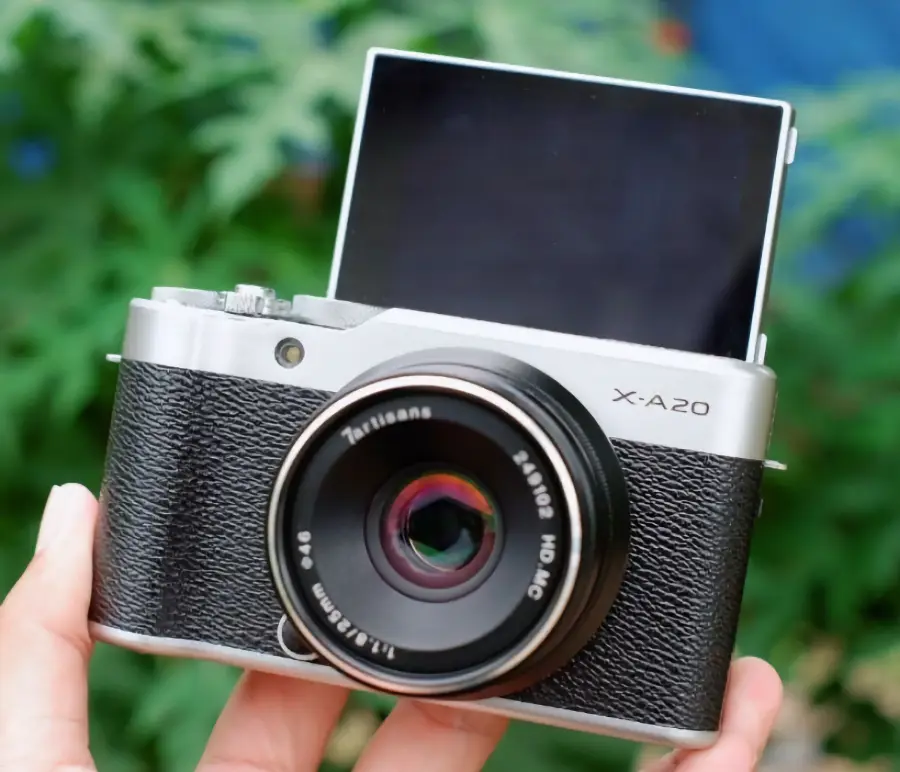
Pros
- Compact and lightweight design
- Excellent image quality and color reproduction
- User-friendly interface
- 180-degree rotating LCD screen
- Wi-Fi connectivity
- Reasonable price
Cons
- Lack of EVF
- Somewhat slow AF speed
- No 4K video support
- No touch screen support
- No weather-sealing
🏁 Conclusion

The Fujifilm X-A20 is a very attractive choice for beginners and hobby photographers. Its compact size, excellent image quality, user-friendly interface, and reasonable price are its main advantages. Fujifilm’s color reproduction and film simulation modes allow even beginners to easily capture stunning photos.


